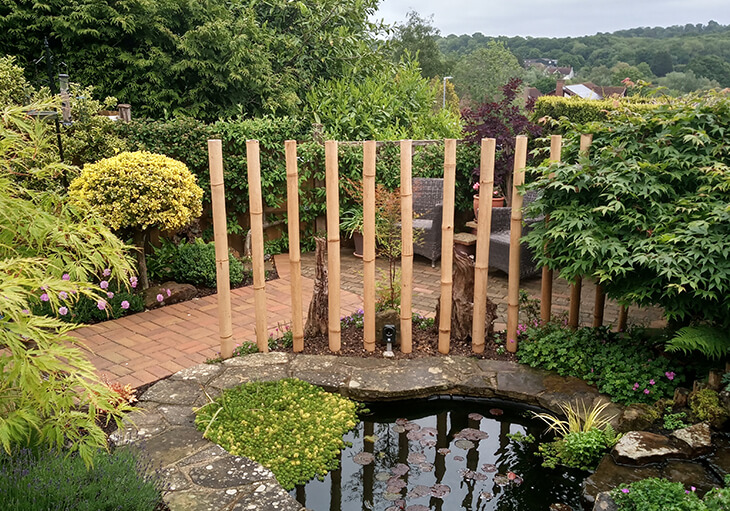
Top tips for a beautiful oriental garden
A Japanese style garden is easy to create. Just follow our guide and you’ll have an enjoyable and relaxing space.
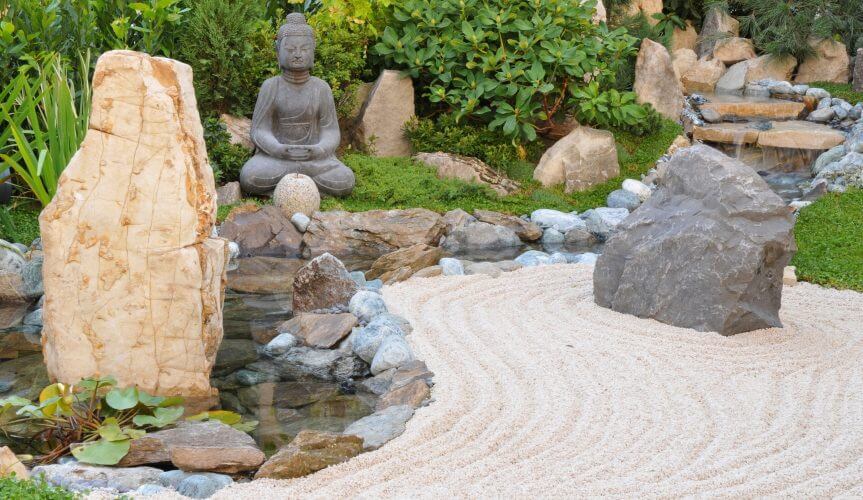
Start with the principles of Japanese garden design. These are asymmetry and balance; symbolism and enclosure. Then combine with the three elements: stone, water, and plants.
1. Stone
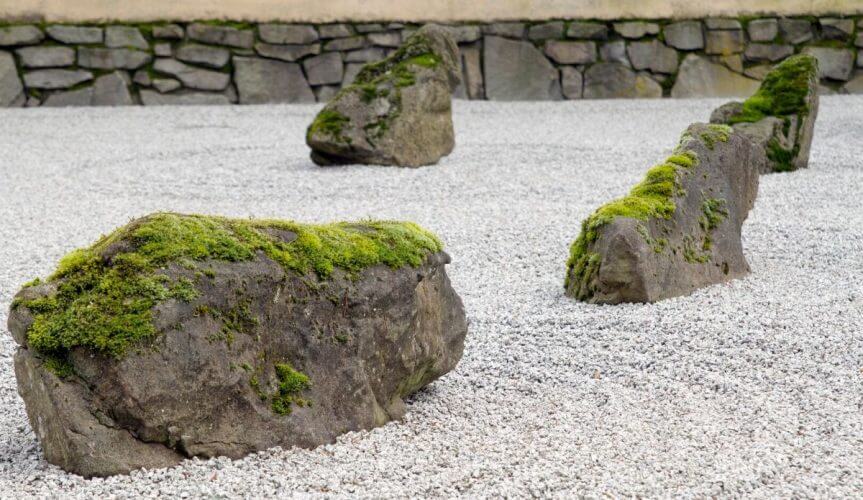
Use boulders, gravel and sand in natural colours. For example, raked gravel areas mimic dry river beds and large rocks represent islands in the sea. These symbolic designs originated from the Shinto religion, where flat areas of gravel would fill a temple courtyard. Then the rise of Zen Buddhism, and principles of feng shui would see careful arrangements of stones, pebbles and pavers. Items from these shrines would then move into the gardens of the wealthy Japanese, such as the Japanese lantern, water basin, and stepping stones. If you have a small garden or terrace, don’t overload the design with all of these elements. Choose one or two as focal points.
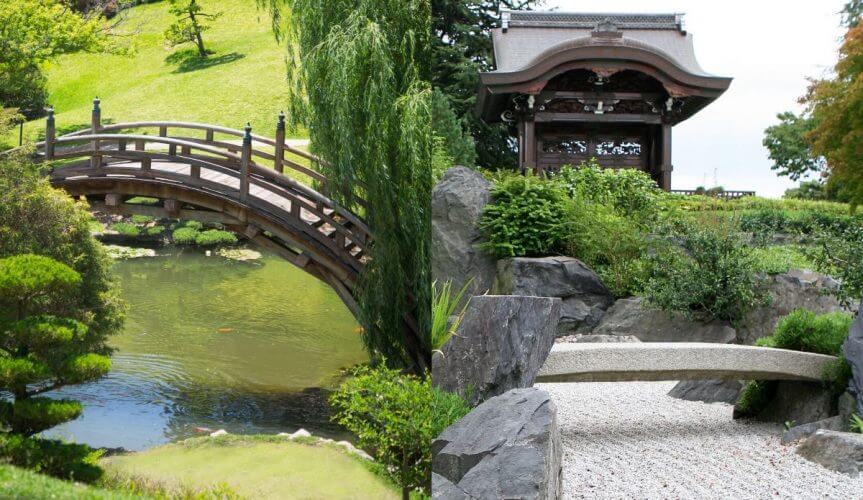
In larger areas of landscaping, such as in palace gardens or in parks, you will see a large flat slab or stone zig-zag bridge often replacing the traditional wooden arched bridge. This hard landscaping creates the backdrop to feature trees and planting. If you enjoy the sculptural qualities of stone, then the Japanese garden style is ideal for you.
2. Water
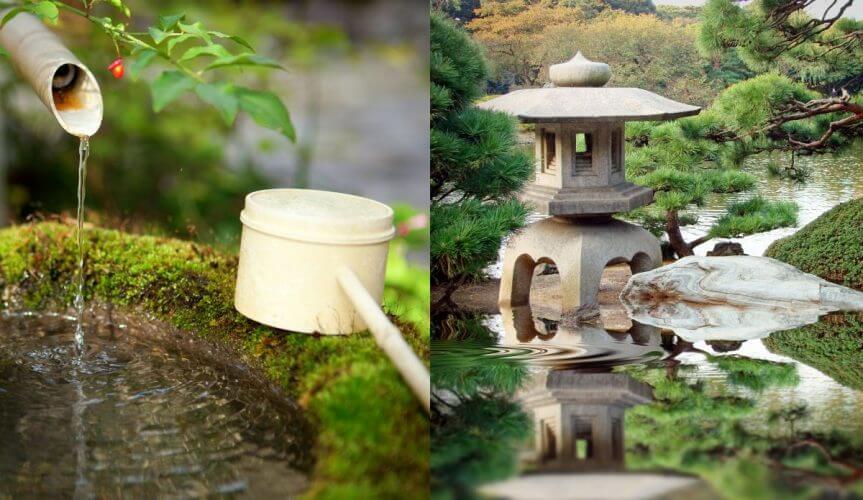
Water symbolises renewal in many cultures and this is true for the Japanese garden. In the past, lakes and ponds provided Japanese families with places to read, share poetry and conduct ceremonies. In your garden you can create an area for contemplation with a gentle splash, ripple or cascade of water. The stone basin, usually round and moss-covered, is the obvious choice for a town garden. The bamboo scoop which accompanies the basin was used outside temples to help guests wash their hands.
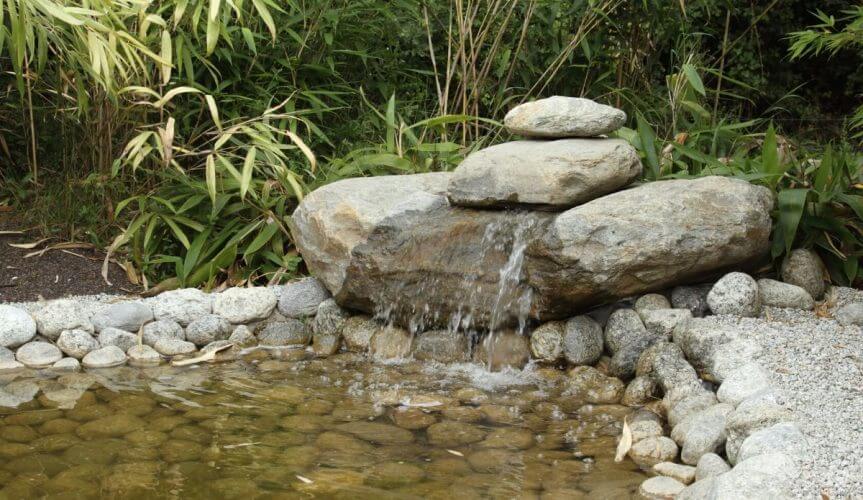
If your garden has room for a pond, then installing a small waterfall will bring a richer sound as well as the opportunity to introduce wildlife, such as Koi. Keep in mind that the size of the water feature should be in scale with the surroundings.
3. Plants
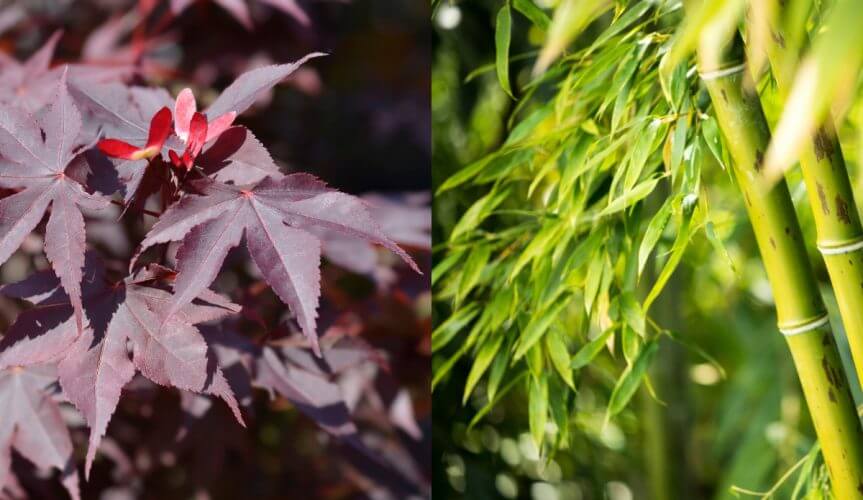
The ‘garden tree’ or ‘Niwaki’ is used to provide scale and seasonal appeal, as in the case of the Yew, Acer, Cherry, and Plum. The Japanese celebrate asymmetry, so although topiary is allowed, bushes and trees must be clipped into irregular, yet pleasing shapes. The Japanese Yew is perfect for this purpose and there are a variety of spieces available that are happy in the UK climate. Visit the likes of Architectural Plants in West Sussex, who have a wide choice of specialist shrubs and trees suitable for Japanese style gardens.
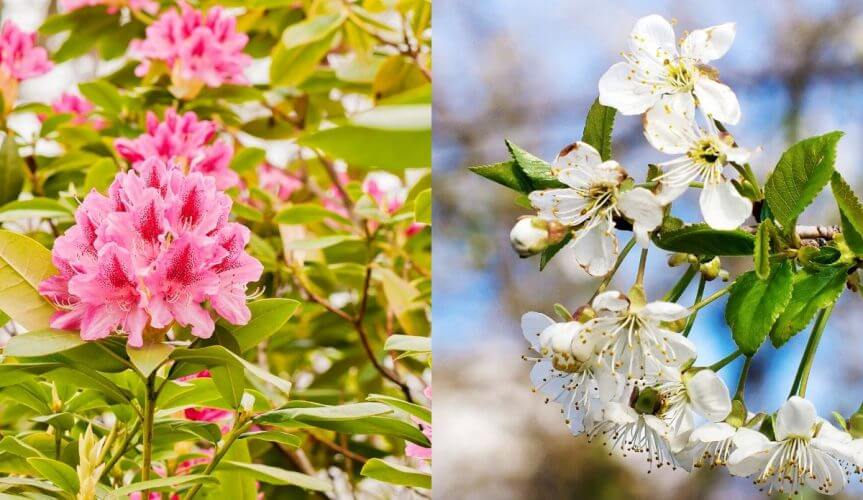
Limit your colour palette for an authentic Japanese garden. In a larger garden you can enjoy blossom from fruit trees and flowering shrubs such as Azalea and Rhododenron. In a small garden the traditional bonsai, meaning ‘pot plant’, gives you the opportunity to grow a miniature Pine or Acer. Check your soil first before committing to all of these plants as some prefer acid soil, whilst others can’t stand chalky soil.
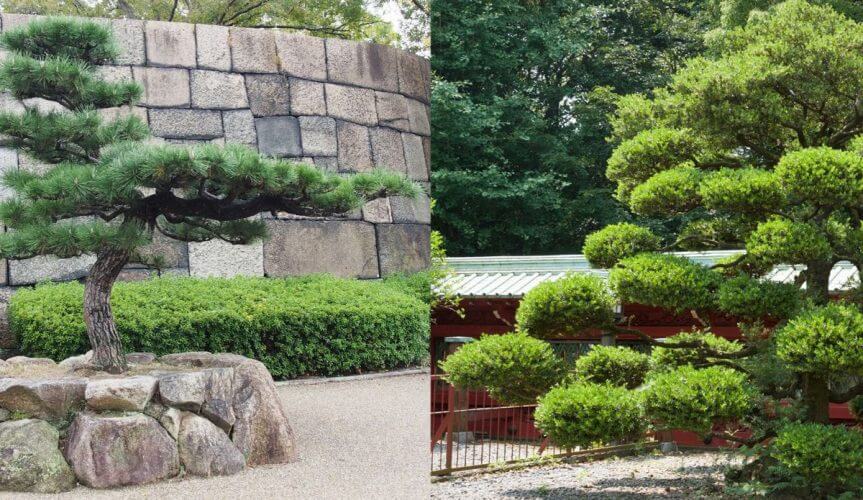
4. Enclosure
There are boundaries necessary for marking out property from one neighbour to another, so the principle of ‘enclosure’ held dear by the Japanese, has a twofold purpose in garden design. Gateways and fences tell people where they can enter and where they cannot tread. The Japanese love to use hand tied fencing made from bamboo poles or slats. The slats must be ‘green’ bamboo as dried bamboo will not bend into the semi-circle required. Straight Moso bamboo poles at different thicknesses and heights can be knotted together with black twine for a traditional fence.
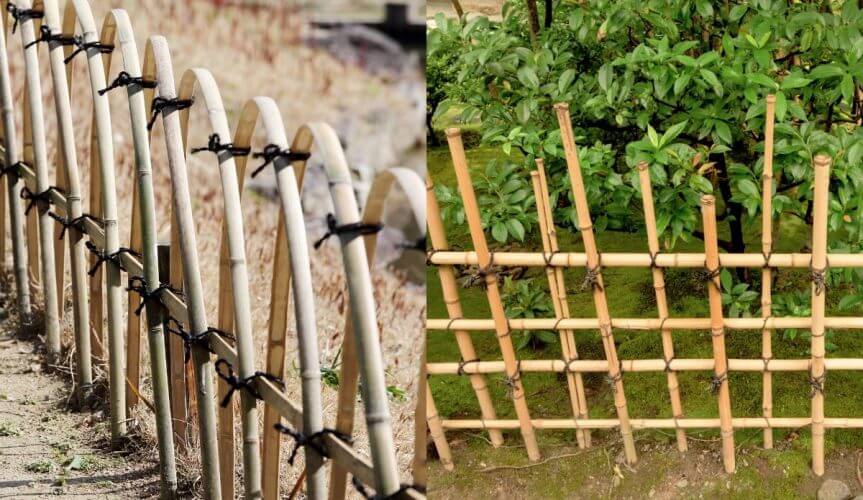
The ‘Torii’ or Japanese gate has a distinctive design which comes from the Shinto shrine. This entrance is usually made from wood or stone and sometimes painted red. It symbolises the transition from the ordinary to the sacred. You may not want such a grandiose gateway and it may not sit in proportion to your property. A simpler version could be made using large bamboo poles.
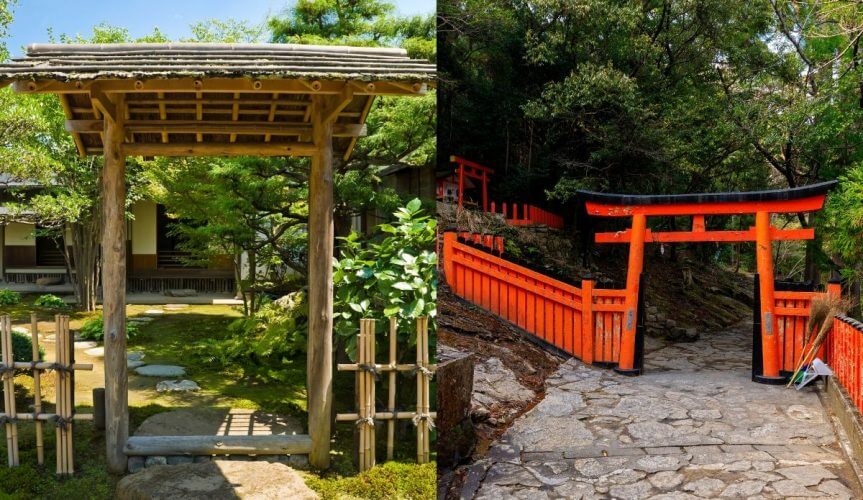
Lastly, check your numbers!
Use odd numbers such as 3, 5 and 7, when applying the Japanese principles of balance and asymmetry. This should be your guide when making arrangements of rocks, plants and other features. There is a whole set of rules just for the setting of of stones in the ancient Japanese garden, but you can create a perfectly authentic space using just these basics.
